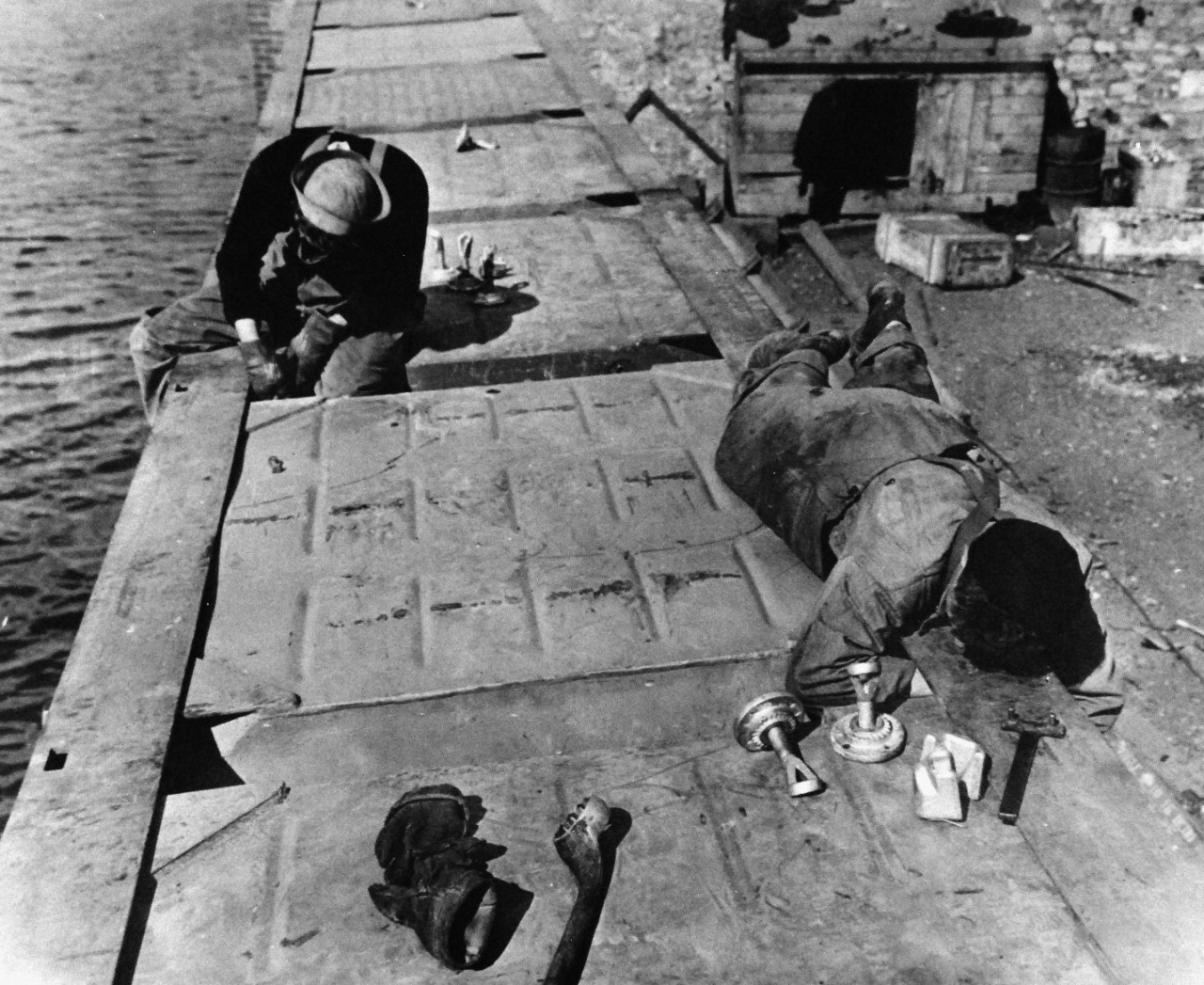80-G-45671: Normany Invasion, Rhino Ferry, June 1944

Download Image:
Low (PNG, 319x319px, 94KB)
Med (JPEG, 1280x1280px, 368KB)
High (TIFF, 2860x2340px, 6MB)
Low (PNG, 319x319px, 94KB)
Med (JPEG, 1280x1280px, 368KB)
High (TIFF, 2860x2340px, 6MB)
Caption:
Topic
- nhhc-topics:amphibious, nhhc-topics:european-theater-of-operations
Document Type
- Photograph
Wars & Conflicts
- World War II 1939-1945
Navy Communities
- Chief of Naval Operations (CNO)
File Formats
- Image (gif, jpg, tiff)
Location of Archival Materials
Recipient Name



